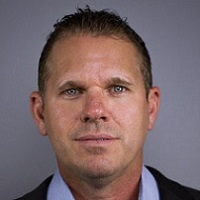 By Lee Horner, CEO, Synzi
By Lee Horner, CEO, Synzi
Twitter: @SynziCare
Twitter: @lee_a_horner
August 12-18, 2018 was National Health Center Week. Featuring the theme of “Celebrating Health Centers: Home of America’s Health Care Heroes,” this year’s annual celebration was designed to raise awareness about the mission and accomplishments of America’s health centers.
Community Health Centers are independent, non-profit, non-governmental health care organizations. Their mission is to provide access to high quality, cost-effective health care services to everyone, regardless of insurance status or ability to pay. According to the National Association of Community Health Centers, health centers:
- Serve 28 million underserved patients with access to comprehensive primary and preventive care
- Are in 11,000 communities across the country
- Provide care to over 13 million people living in poverty, 8.4 million children, and more than 350,000 veterans
The first Community Health Centers (also called Federally Qualified Health Centers or FQHCs) were established in the U.S. more than 50 years ago by community residents and health care providers who believed that everyone should have access to quality health care no matter who they are, where they live or their ability to pay. National Health Center Week highlights the benefits which Health Centers contribute towards community health:
- Highly efficient and cost-effective care, generating $24 billion in savings for the health care system annually
- Reduction of costly, avoidable emergency department (ED) visits and hospital stays. The average cost for a health center medical visit was less than one-sixth the average cost of an ED visit in 2012
- A range primary and preventive care services, including screening, diagnosis and management of chronic illnesses such as diabetes, asthma, heart and lung disease, depression, cancer and HIV/AIDS
The health center movement brought doctors and health care services into medically underserved areas across the US. Health centers participate in federal programs designed to place clinicians in underserved areas, such as the National Health Service Corps, Nurse Corps, and Teaching Health Centers programs. However, health centers struggle with gaps in their clinical staff. A recent national survey of health centers indicated that 95% of health centers have at least one clinical staff vacancy. The centers with vacant positions are currently recruiting for 13% more clinical staff. If the open positions are filled, health centers could expand their reach by serving 2 million more patients.
Health centers in underserved areas are increasingly using virtual care to better meet their patients’ needs. In 2016, 57% of health centers across the US had either begun using telehealth, were in the process of implementing a telehealth program, or were actively exploring its feasibility. For the underserved, video-based virtual care platforms can help Health Centers provide patients with more specialized care, on-demand. Given the gaps in available providers and specialists, technology can help augment current staff with offsite providers and specialists who can deliver needed consults and care from anywhere, on any device, and at any time. This gives patients more convenient and timely access to care and comfort – while providing opportunities to reduce costs involved with arranging for transportation to distant locations for specialized or follow-up care.
Health centers serve a critical role in providing and managing the care for the underserved patient on an individual basis by providing what a patient needs, when needed. Virtual care platforms will continue to transform the centers’ commitment to effective and efficient patient care by providing more options in terms of how, when, and where offsite specialists can engage with clinical staff and patients in these communities. Technology-driven approaches to care will help drive greater satisfaction for the centers, the providers, the patients, and the broader community.
This article was originally published on the Synzi Blog and is republished here with permission.
